:format(jpeg)/cloudfront-us-east-1.images.arcpublishing.com/tgam/ENBVUHHDHJFGNJAWKHYHSGUJKA.jpg)
Carmen Aguirre is a writer and theatre artist whose books include Something Fierce: Memoirs of a Revolutionary Daughter.
Sept. 11 marks the 50th anniversary of the coup in Chile. Salvador Allende, the democratically elected socialist president, was overthrown by the U.S.-backed general, Augusto Pinochet. Allende, midway through a six-year term, died defending the presidential palace while it was being bombed by the Air Force.
I was five years old at the time. Three months later, my family went into exile, ending up in Vancouver. We thought we’d be here for six months, at which point a transitional government would be installed, and we would return to Chile. The dictatorship lasted for 17 years.
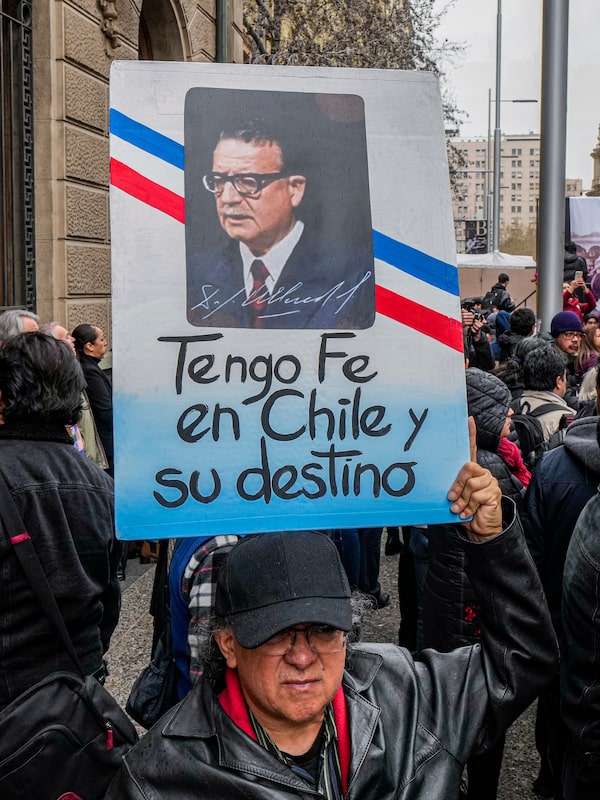
In Santiago, an Allende supporter's poster of the late president reads 'I have faith in Chile and her destiny,' words from his final speech on Sept. 11, 1973.Esteban Felix/The Associated Press
Allende’s peaceful road to socialism through the Popular Unity government included the nationalization of Chuquicamata (the world’s biggest copper mine), agrarian reform, returning land to the indigenous Mapuche people, and literacy campaigns. The national context of his triumph on Sept. 4, 1970, was that of a poverty-stricken working and peasant class with a century-long tradition of organized resistance through anarcho-syndicalism and communist and socialist parties. These folks, along with intellectuals, students and artists, among other sectors of society, elected Allende, who had been campaigning for almost 20 years. The Latin American context of his election and subsequent government was that 11 years earlier, the Cuban revolution had been victorious. Allende tried to implement revolutionary change without the revolution. The international context was national liberation movements throughout the Global South and the Cold War.
When Allende nationalized the country’s resources, the United States implemented sanctions. “Make the economy scream,” U.S. president Richard Nixon infamously said. Canada, under Pierre Trudeau, participated, suspending bilateral assistance, and voting to cut off all money Chile received from the International Monetary Fund; Canadian mining corporation Noranda had been part owner of the nationalized Chuquicamata copper mine. Canadian banks left the country.
The Chilean bourgeoisie did everything to prevent the socialist project from succeeding, from right-wing representatives in the Chamber of Deputies accusing the government’s actions of being unconstitutional and illegal, to buying off the truckers’ union to participate in a national strike against Allende in 1972. The CIA financed this and other strikes to the tune of US$8-million. The bourgeoisie was ultimately victorious in getting the military to do its bidding through Pinochet, but only after assassinating generals René Schneider and Carlos Prats – with CIA backing and intelligence – after they each refused to carry out a coup.
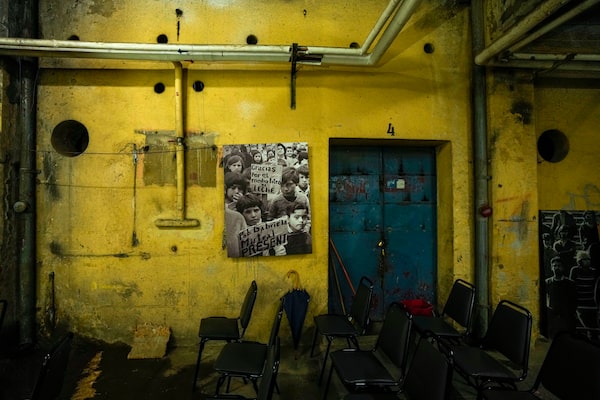
At Santiago's National Stadium, a poster shows Chilean children thanking Mr. Allende for free milk. The stadium was used for detentions and torture during the dictatorship.Esteban Felix/The Associated Press
Although I was a young child during Allende’s government, I do remember it. I remember the free milk we got every day in school, and my parents’ euphoria during those three years. My parents came from lower-middle-class families. Thanks to Chile’s excellent public education system (which was swiftly privatized by Pinochet), they both managed to get university degrees. Their higher education was entirely free, including five years living in university residence, with full meals. They were taught by the likes of poet and physicist Nicanor Parra; Brazilian educator, philosopher and Pedagogy of the Oppressed author Paulo Freire; and the award-winning novelist and playwright Ariel Dorfman. My father got his degree in physics and my mother in English. My father was the head of the physics department and my mother the head of the English department at Valdivia’s Austral University when the coup happened. They were fired for being active supporters of the Allende government, and our house was raided. Within six weeks of the coup, my father’s best friend, Freddy Taberna, the son of a miner and student leader during their university days, had been arrested, tortured and executed at Pisagua concentration camp in the north of Chile.
Henry Kissinger, then the U.S.’s secretary of state, had been pushing for the coup since Allende’s election. Chile needed to be made an example of. No country in the Global South could undertake a national liberation and socialist project through an electoral process and within the existing structures. If it was allowed to succeed, then others would follow, Mr. Kissinger warned Mr. Nixon – and not only in the Global South. So the coup and the ensuing dictatorship were extremely violent. Tens of thousands of people were rounded up, put in concentration camps and underground detention centres, tortured, murdered, disappeared and exiled.
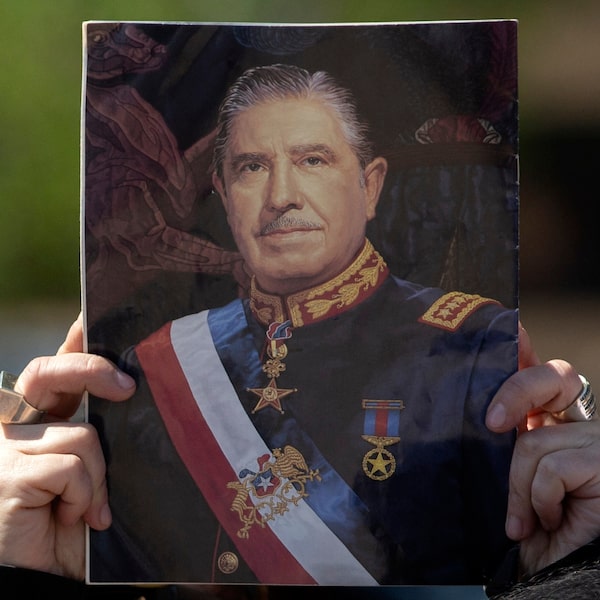
Augusto Pinochet maintained power through extrajudicial killings and crackdowns on dissent.CLAUDIO REYES/AFP via Getty Images
Not only was Chile made an example of, it was also, after Indonesia, the world’s first neoliberal laboratory. That was the point: not only to repress a national liberation and socialist project, but to install one of the most capitalist economic models on the planet. Mr. Pinochet promptly opened Chile’s doors to multinationals, returned Mapuche land to private hands, privatized education, health care and pension plans, banned unions and opposition parties, eliminated labour and environmental laws, implemented austerity measures, did away with price controls and rewrote the constitution, enshrining neoliberalism in its pages. This economic model and constitution are in place to this day.
And to this day, Chileans are an example of resistance to all that. An uprising in 2019 led to the writing of a new constitution that was ultimately voted down one year ago; this December, yet another constitution will go to a referendum. Despite the dictatorship’s state terrorism, Chileans resisted for all 17 years and continue to fight for a return to nationalization of resources, universal health care and free, quality public university education. The Mapuche people remain in a battle for their land, which has the support of many sectors of Chilean society.
:format(jpeg)/cloudfront-us-east-1.images.arcpublishing.com/tgam/J6SXAOQCV5FUJHQA5QRFL3Y5NE.jpg)
:format(jpeg)/cloudfront-us-east-1.images.arcpublishing.com/tgam/EUWFDM24LNO4TAKO6MIVB2ME7M.JPG)
:format(jpeg)/cloudfront-us-east-1.images.arcpublishing.com/tgam/MCZRXGCPTVJBXA2PD35UEVCDWY.jpg)
:format(jpeg)/cloudfront-us-east-1.images.arcpublishing.com/tgam/OXNI3PNSQZHKTLCCFIBOZW3HAE.JPG)
Pierre Trudeau expressed diplomatic support for Mr. Pinochet. Within a month of the coup, Canada voted for Inter-American Development Bank loans to Chile, and endorsed International Monetary Fund loans. By 1978, Canadian banks had given 20 loans to Chile and direct investments by Canadian companies were at almost $1-billion. Although Mr. Pinochet kept Chile’s three largest copper mines in state hands, using some of their earnings to fund his military, Noranda reclaimed its 49-per-cent share in its subsidiary Chile Canadian Mines.
Given all of this, why and how did Canada give asylum to almost 7,000 refugees fleeing the dictatorship?
Leftists across Canada were appalled by their government’s response to the ultra-right-wing fascist coup, demanding that doors be opened to Chilean refugees. They rallied, occupied government offices and wrote letters until, in 1974, Canada agreed to offer asylum to Chileans.
Carmen Aguirre's family arrived in Canada soon after it began accepting exiles from Chile.Tim Fraser/The Globe and Mail
My family, made up of myself at the age of 6, my five-year-old sister, my mother in her mid-20s and my father in his early 30s, were among the first to arrive. For the first time in its history, Canada accepted leftist refugees fleeing a so-called Third World country. You were flown to Canada, often to a city not of your choosing, and put up in a hotel until housing was found. The money spent on your flights, accommodation and other expenses was paid back to the government in full once you got work. Jobs were plentiful in Canada in the 1970s, much of them hard labour that many Canadians didn’t want to do. In order to be accepted as a Chilean asylum seeker, you agreed to renounce your leftist political activity in Canada. Almost no one followed that directive.
When Canada received Chilean refugees, the government probably hoped for social-climbing model-minority immigrants here to stay, integrate and become “Canadians” – not a community that refused to leave its leftist politics behind, and lived and breathed for solidarity work.
Eventually, about half returned to Chile. For some of the other half, they still lead a floating life, unable to set roots anywhere but the land that always beckons, the land they were forced to flee. We were never immigrants, here to reinvent ourselves, refusing to look back; we were exiles, many of us blacklisted in Chile, making it illegal for us to return well into the 1980s.
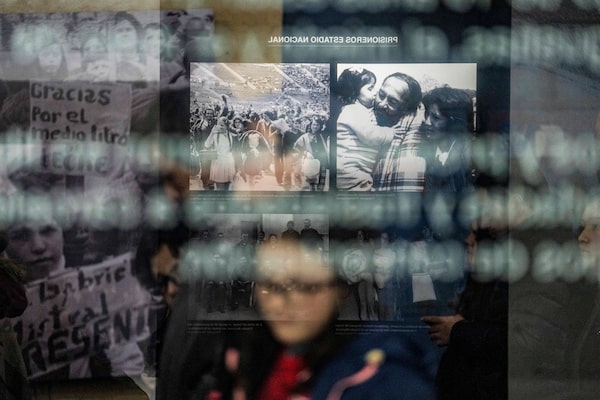
Visitors watch a presentation in honour of Chilean singer-songwriter Victor Jara at the National Stadium this past August. Jara was tortured and killed during the coup of 1973.Esteban Felix/The Associated Press
Today, there are commemoration sites all over Chile, such as the National Stadium, turned into a concentration camp after the coup; the renaming of Chile Stadium to Victor Jara Stadium, where the renowned singer was murdered; torture centres such as Villa Grimaldi and Londres 38; the Santiago General Cemetery; and the Museum of Memory and Human Rights.
The anniversary is being observed up and down Chile and across the world by honouring all those who resisted, starting with Allende, who gave his life for a better society 50 years ago. Reminders of the dictatorship are ever present, from the recent suicide of one of Victor Jara’s torturers before he was sent to jail, to President Gabriel Boric’s announcement on Aug. 30 that he will mark this anniversary by launching the National Search Plan. This permanent state policy will seek to establish the circumstances and conditions under which each person was forcibly disappeared. This is the first time that the Chilean state has assumed responsibility for the search for victims of the dictatorship.
Let there be no doubt that this historic step was made thanks to the indefatigable work carried out by the families of the disappeared over all these decades. And that is what I wish to commemorate today: the destruction of a dream, and all those who still fight for it, then and now, here, there and everywhere.
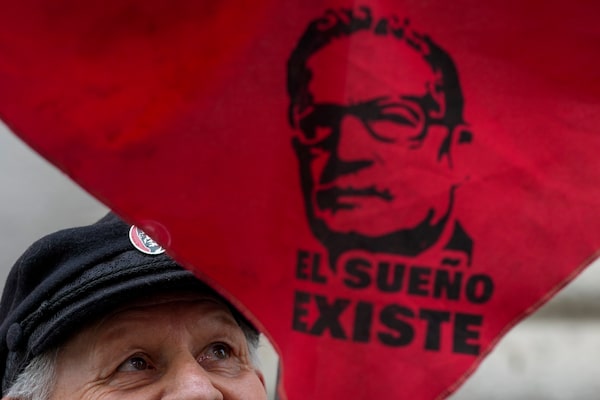
'The dream lives on,' reads an Allende banner at La Moneda on Sept. 4.Esteban Felix/The Associated Press